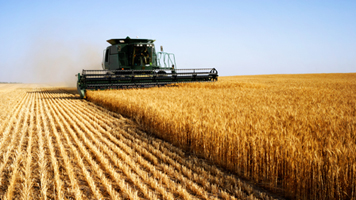Farm Bill Process Starts Again: What Could Go Wrong?
Category: Farm Bill, Miscellaneous
 (Agweek) – Journalists like me haven’t had much time to “recover” from the “ups and downs” of what finally became the 2014 farm bill.
(Agweek) – Journalists like me haven’t had much time to “recover” from the “ups and downs” of what finally became the 2014 farm bill.
But here we go again: Both the House and Senate agriculture committees overseeing development of a new farm bill are already hosting hearings. They plan to gather input and start crafting ideas before the current farm bill expires in the fall of 2018.
Veterans of previous farm bills don’t anticipate that this process will be as difficult as the last one, which started in the summer of 2010 and didn’t result in a bill that President Barack Obama signed until February 2014.
During a recent meeting with new members of the House Agriculture Committee, Rep. Frank Lucas, R-Okla. — who chaired the committee during work on the previous bill — tried to put the 2014 farm bill into perspective compared to previous farm bills.
“They’ve all been so different,” he emphasized. From his perspective, farm bills have evolved over three distinctly different generations, adapting to reflect different parts of U.S. agricultural history and economic conditions.
The very first farm bill, in 1933, was about supply management because we had stockpiles of excess commodities, Lucas told Agri-Pulse. Subsequent farm bills were used to build upon the tools first used at that time. The second generation of farm bills, launched in 1996, was dubbed “Freedom to Farm” as a way to move farmers away from production controls and target prices. That’s when direct or “transition” payments were first launched and Roberts chaired the House Agriculture Committee.
The third generation of farm bills — culminating in the 2014 bill — was focused on getting rid of direct payments, Lucas said.
“When you have to reinvent the wheel, like we did, it’s tough,” Lucas said of the last farm bill experience. “But like 2002 and 2008, when you are refining existing policy, it’s much easier.”
Lucas predicts that the next farm bill will be a refinement process, rather than a reinvention process.
In order to share the challenges involved with writing a new farm bill, Agri-Pulse launched a new in-depth editorial series: “The seven things you need to know before you write the next farm bill.” It’s designed to help educate those who have never been through the process or might not have seen some of the behind-the-scenes action that our editorial team witnessed.
For example, who would have thought that the farm bill would be defeated and then have to be split in the House, before being sewn back together again with the Senate version?
Or that Senate Leader Harry Reid, D-Nev., would have relied on Sen. Pat Roberts’ staff to write farm bill extension language — rather than relying on Sen. Debbie Stabenow, his fellow Democrat and Chairman of the Senate Agriculture Committee?
Can we pass another one?
Farmers are already wondering if it’s possible to pass another farm bill, says Mary Kay Thatcher, senior director of congressional relations for the American Farm Bureau Federation.
The answer to that question is “absolutely yes,” she says, but it’s going to require a bipartisan approach. Here’s why.
When a farm bill finally passed the House, the vote was 251 to 156, with 28 abstaining from voting.
Fast forward to 2017 and the new members in Congress. What if a farm bill came up for a vote this year?
“You would have about 184 of those members that voted for it in 2014 that are still around, about 134 who opposed passage, and a very good chunk, 117 of them, who are brand new,” Thatcher explained during a recent presentation to the Crop Insurance and Reinsurance Bureau meeting.
“My point: 184 isn’t very far from the 218 House members that you need for passage. So, I think it’s an exceptional chance that as long as we write a good, balanced, robust farm bill, we’re not going to have any trouble passing the next one.”
It’s similar in the Senate, where it was a 68-32 vote for final passage, she added. Of those who voted for passage, 57 remain — just three short of the 60 percent needed to pass.
“I think the support for a farm bill is indeed still very deep,” she added.
Thatcher says a recent Congressional Budget Office report also provides a good talking point for farm bill supporters: It shows an $81 billion difference in savings since 2014.
“So not only did we save $23 billion dollars when we wrote the last farm bill, but since then, the farm bill has cost $81 billion less than we thought it would,” she explained.




